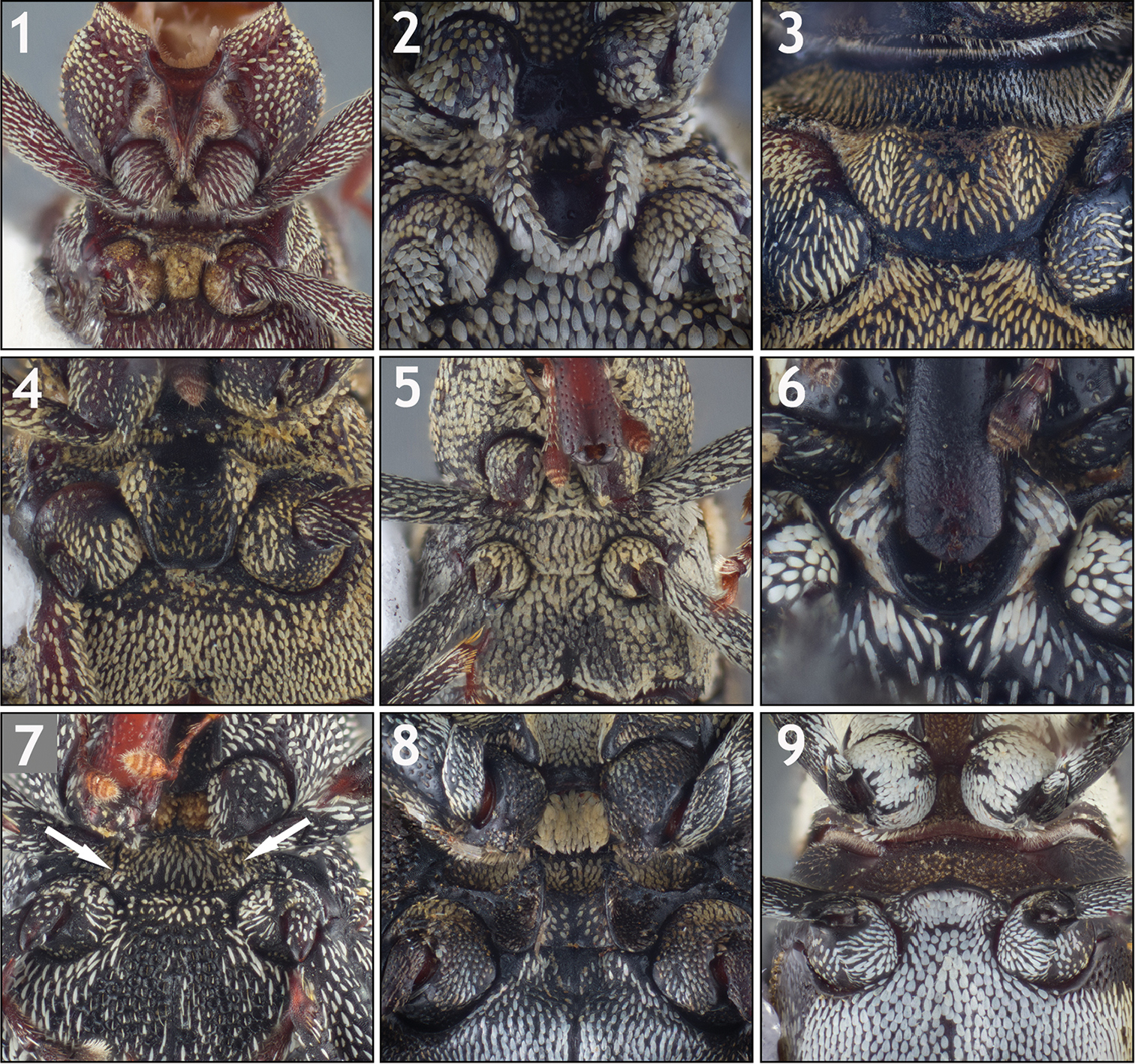
|
||
|
Variation in the mesoventrite. 1 Trichodocerus brevilineatus [ARTSYS0000616] showing a prosternal rostral “sheath” with the sides converging below the procoxae, the transverse ridge anterior to the mesocoxae and the region of the mesoventrite posterior to the ridge with dense yellow scales 2 Lobops bonvouloiri [ARTSYS0000527] showing a cup-shaped receptacle for receiving the rostrum 3 Piazurus trifoveatus [SSAC0001118] with an “open” channel on the mesoventrite 4 Pseudopinarus condyliatus [SSAC0001116] with an “open” channel on the mesoventrite 5 Acoptus suturalis [ASUHIC0016914] showing a flat, unmodified mesoventrite 6 Copturus sanguinicollis [ASUHIC0086638] showing a closed receptacle on the mesoventrite with lateral flanges 7 Cylindrocopturinus pictus [SSAC0001288] showing a rostral channel of the mesoventrite formed by relatively parallel carinae and no posterior termination 8 Euzurus ornativentris [ARTSYS0000796] 9 Hoplocopturus javeti [SSAC0001289] with an inverted U-shaped carina and the region posterior to the carina invaginated. |